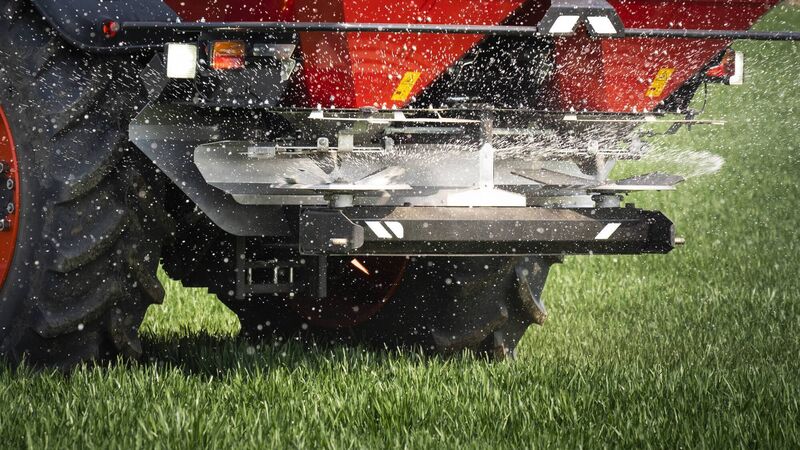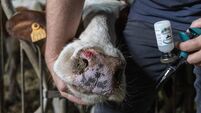Irish phosphorous surplus among worst in the EU

Groundwater quality in Ireland is generally good, and improving at some monitoring stations. Picture: iStock
An EU report has warned too much phosphorus in Irish soils, and “hotspots” where nitrate concentrations are increasing, should be the main areas Ireland should tackle in its Nitrates Action Programme.
Groundwater quality in Ireland is generally good, and improving at some monitoring stations, according to the European Commission’s recently released report on the protection of waters from agricultural pollution, for the 2016–2019 period.
It said Irish surface waters have 'low' nitrate concentrations, while the number of waters that are eutrophic remains limited.
Eutrophication, which is the over-enrichment of water by nutrients, especially nitrogen and phosphorus, is a widespread problem in Europe.
The report reveals almost all surface waters are eutrophic in north Belgium (Flanders). There are also widespread high-nitrate water problems across the EU.
However, it noted that the surplus (outputs to the soil minus inputs) in Ireland is at about the EU average for nitrogen, while the surplus of phosphorus is among the highest in the EU.
The report said there have been some encouraging signs, with water quality improvement in 152 of 726 water bodies that were prioritised for action in the 2018-21 River Basin Management Plan.
This was attributed to the positive efforts of local authorities, other public bodies, local communities, and landholders.
EU Commission experts said there is a relationship between Ireland’s farming intensity and nitrate concentrations in waters, but there is water quality variability within and between sub-catchments.
Soils, weather and farming practices have a significant influence on nitrates, which has important implications for selecting the right measures in the right place, at the right times.
Further new information on Irish water quality came last July in the Environmental Protection Agency’s Water Quality Indicators Report, with Dr Eimear Cotter of the EPA saying: “Our water quality is currently under threat with nitrogen pollution from agriculture causing particular pressure in parts of the south, southeast and east of the country.
"Rivers such as the Bandon, Lee, Blackwater, Suir, Nore, Barrow and Slaney have nitrogen levels that are too high, with significant implications for the marine environments they flow into.
According to the EPA report, just over half of Ireland’s rivers and lakes are in satisfactory biological quality, and in 2019 and 2020, 345 rivers showed improvements in quality, while 230 declined in quality.
There has been an overall net improvement in the biological quality of rivers monitored in 2019 and 2020.
However, it is clear from the EU report that most member states have worse water quality than Ireland.
Austria has good groundwater quality, but with “hotspots”.
Belgium’s groundwater quality is “bad”, particularly in Flanders, where nitrate concentration is strongly increasing, and almost all surface waters are eutrophic. The water quality in Wallonia is better than the EU average. The Commission urged Flanders to take additional measures that match the severity of the problems, and to support farmers switching to more resilient and less intensive production.
Bulgaria’s groundwater quality is generally good, but with high-nitrate hotspots.
Croatia’s groundwater quality is generally good, but a high number of surface waters are eutrophic.
Groundwater quality is generally good in Cyprus, but with high-nitrate hotspots. Surface waters are good.
The Czech Republic has a large number of high-nitrate groundwater hotspots, and a very high number of surface waters are eutrophic.
Denmark’s groundwater is generally good, but with pollution increasing at a high number of monitoring points. A very high number of surface waters are eutrophic.
Groundwater in Poland fares similarly, with some high-nitrate hotspots, and a very high number of eutrophic surface waters, inland and marine.
Estonia’s groundwater quality is generally good but many surface waters are eutrophic.
The situation was similar across the Baltic sea in neighbouring Finland, where groundwater is good, but eutrophication is recorded for 83% of surface and marine water monitoring stations. The Commission recommends that Finland tackle eutrophication issues where agricultural pressure is significant.
Similar recommendations were made for Lithuania.
Groundwater is average in France, with a lot of historical (Brittany, centre west) and new (north, northeast) hotspots. Eutrophication of marine water is an issue on the north coast of Brittany.
Greece has high-nitrate hotspots, and a high number of eutrophic surface waters.
Hungary’s groundwater quality is generally good, with some high-nitrate hotspots, and a very high number of eutrophic surface waters.
Italy and Slovakia's groundwater is generally good, with high-nitrate hotspots, and a high number of eutrophic waters.
Latvia has a very high number of eutrophic surface waters, affecting inland and marine waters.
Luxemburg has many groundwater monitoring stations with high nitrates, and a very high number of eutrophic surface waters.
The Netherlands has high-nitrate groundwater hotspots, and a very high number of eutrophic surface waters. The Commission recommends the Netherlands support farmers switching to more sustainable and less intensive production.
Spain, Portugal and Romania have many groundwater high-nitrate hotspots, and many eutrophic surface waters.
Sweden’s groundwater is generally very good, but some monitoring stations show eutrophication.










